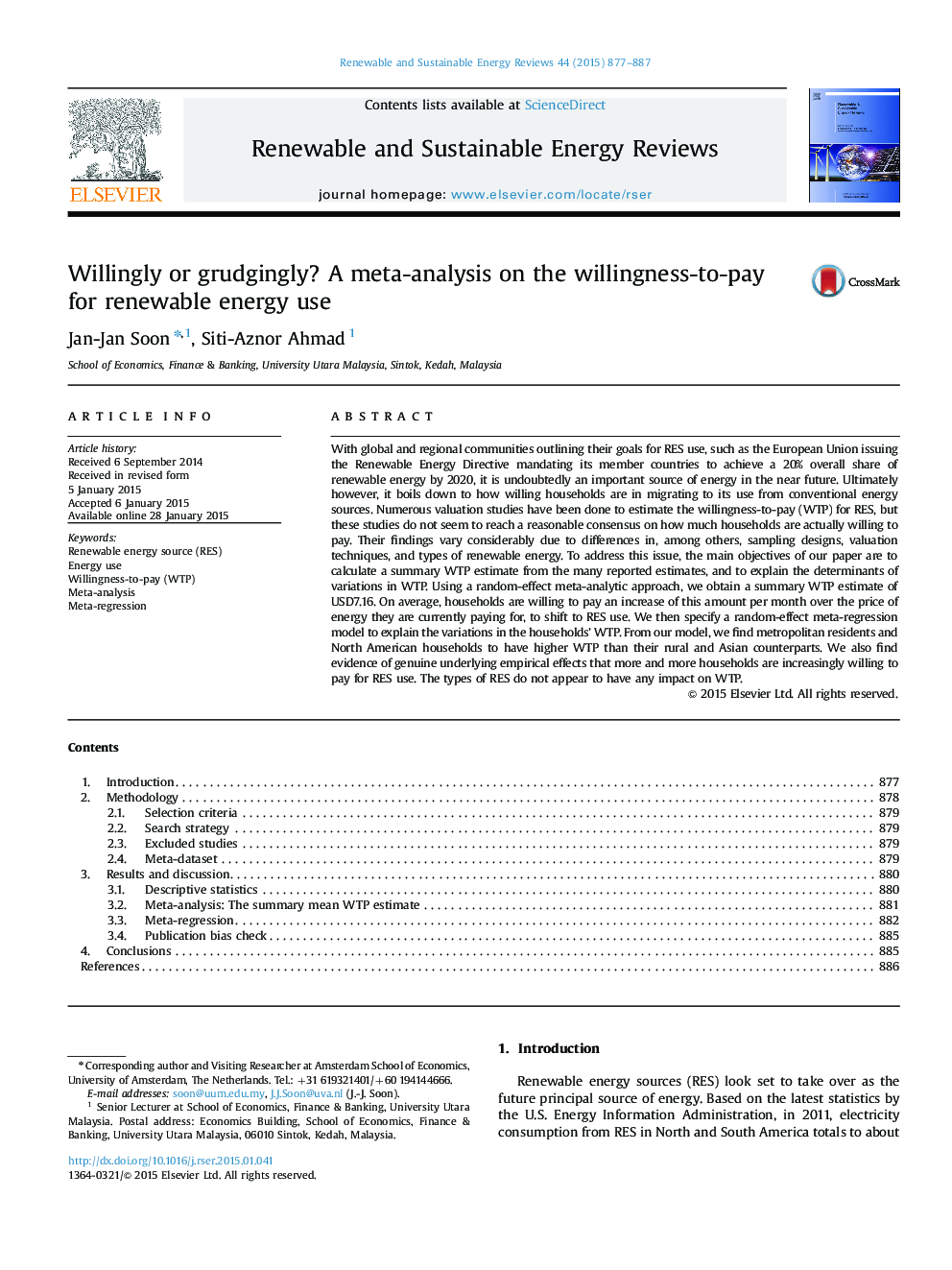| Article ID | Journal | Published Year | Pages | File Type |
|---|---|---|---|---|
| 8117489 | Renewable and Sustainable Energy Reviews | 2015 | 11 Pages |
Abstract
With global and regional communities outlining their goals for RES use, such as the European Union issuing the Renewable Energy Directive mandating its member countries to achieve a 20% overall share of renewable energy by 2020, it is undoubtedly an important source of energy in the near future. Ultimately however, it boils down to how willing households are in migrating to its use from conventional energy sources. Numerous valuation studies have been done to estimate the willingness-to-pay (WTP) for RES, but these studies do not seem to reach a reasonable consensus on how much households are actually willing to pay. Their findings vary considerably due to differences in, among others, sampling designs, valuation techniques, and types of renewable energy. To address this issue, the main objectives of our paper are to calculate a summary WTP estimate from the many reported estimates, and to explain the determinants of variations in WTP. Using a random-effect meta-analytic approach, we obtain a summary WTP estimate of USD7.16. On average, households are willing to pay an increase of this amount per month over the price of energy they are currently paying for, to shift to RES use. We then specify a random-effect meta-regression model to explain the variations in the households' WTP. From our model, we find metropolitan residents and North American households to have higher WTP than their rural and Asian counterparts. We also find evidence of genuine underlying empirical effects that more and more households are increasingly willing to pay for RES use. The types of RES do not appear to have any impact on WTP.
Keywords
Related Topics
Physical Sciences and Engineering
Energy
Renewable Energy, Sustainability and the Environment
Authors
Jan-Jan Soon, Siti-Aznor Ahmad,
